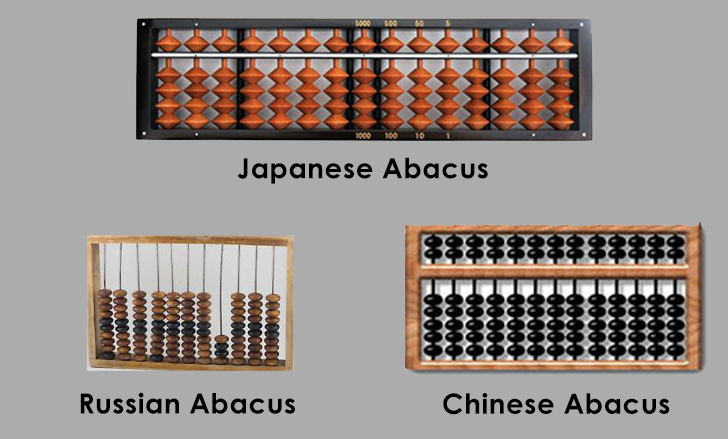The need for calculation has always been an essential part of human life. Even in ancient times, the calculations were not just limited to counting but calculative operations like addition, subtraction, multiplication, and division were equally required. Therefore, to meet the need of it, humans tried devising several ways that could make the process of calculation less tedious and quick. But among all different ways to help the calculation, the abacus has been the most sought-after calculation device and it still remains useful.
The word Abacus originates from a Greek word “abax” or “a flat surface”. In olden days the calculations were done using flat boards with the help of small stones or pebbles, thus the name Abacus originated. This primitive setup of a flat board and stones were later assembled into an abacus, with the help of lines connecting these stones. Following this, the evolution of abacus witnessed the replacement of stones with beads and the lines were replaced by rods that contained the beads. The overall appearance of it has evolved hugely over time, yet the basic idea of calculation remains the same with the rods representing the different place values whereas each bead representing a number, which can also be moved along the length of the rods as per the need of calculation. This setup of beads and rods made the process of addition and subtraction very easily and quick.
The history of the evolution of abacus is quite fascinating and appropriately, justifies the statement that - Necessity is the mother of invention. The abacus has been used since olden days, yet the proper evidence of the usage of abacus has been witnessed in the ancient Rome around 700 B.C., wherein the make of the device was sturdy and simultaneously was small enough to fit in the hands whereas the material used for making the older devices deteriorated over time.
Furthermore, it was observed that the usage of abacus was not just limited to the Greeks, this quick calculation device was used by other races like the Chinese, the Japanese and the Russians. Each being similar and different to the original abacus in their own way.
The Chinese abacus meaning is called the Suanpan, which was commonly used in the thirteenth century and was structurally slightly different from the original abacus. The suanpan has two decks instead of one with upper deck constituting two beads in each column whereas the lower deck constituting five beads in each column. This setup made the process of reading the numbers very easy.
Another variation of the abacus is the Japanese, Soroban, which is still being used today. Structurally, the soroban constitutes slight variations in comparison to the Chinese abacus, wherein two rows of beads in the upper deck, have only one bead in each row and the lower deck, contains only four rows of beads rather than five. The one less bead in the soroban signifies that there is no carrying forward of numbers The soroban is still very popular in modern Japan and the Japanese students are made to learn the abacus course in their early life. It is also proven that proficiency with soroban helps calculating faster even than a calculator.
The Russian, Schoty is another sister of the abacus, that is still being used in modern Russia since the sixteenth century. The schoty is structurally quite different from its other counterparts, as it is not divided into decks. Furthermore, the beads in it slide horizontally, rather than vertically. Each wire constituting ten beads, each having a value as one. Also, when all the beads are placed to the right, the device shows the number zero. Another prominent feature, of the schoty is the representation of Russian currency using the two dark-colored middle beads.
The evolution of such a simple device has come such a long way, that it has helped the mankind visualize and master, the most abstract process called calculations and it still continues to help.


